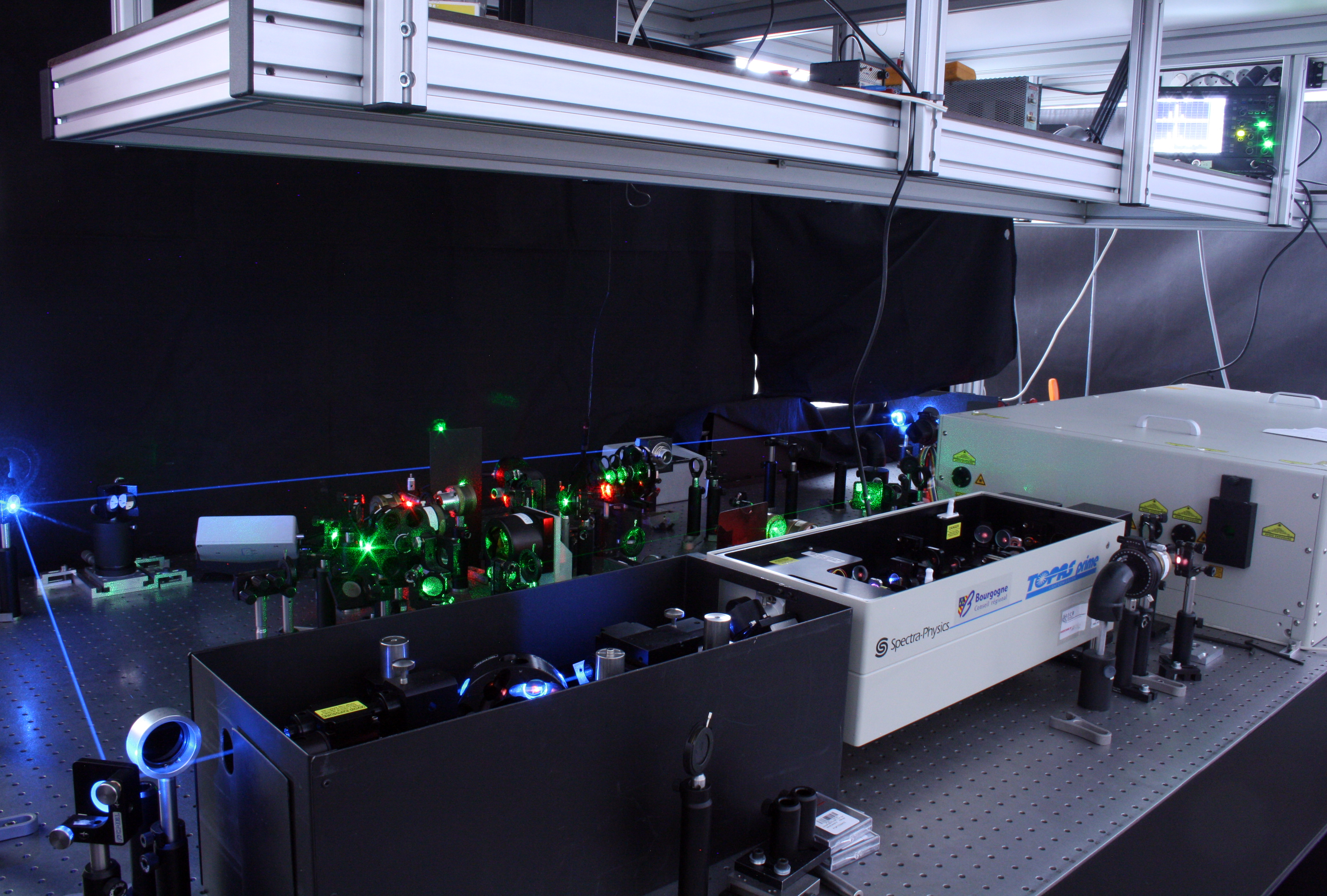Femtosecond Processes & Intense Lasers
Since 1999, the PFL team has developed a research activity in the field of the generation and exploitation of controlled molecular dynamics. With its pioneering work on optically probed laser-induced field-free molecular alignment and its expertise on control by pulse shaping techniques, the team has notably contributed to the development of a research topic becoming today the scientific target of several international leading groups. The originality of the group relies on the use of all optically probed short-pulse molecular alignment associated with close and open loop control strategies.
Highlights of the scientific achievements of the PFL group in strong field interactions of laser radiation with matter include:
- demonstration of optically probed field-free molecular alignment
- implementation of field-Free two-direction alignment of linear molecules
- development of novel approaches for the control and optimization of field-free molecular alignment by phase-shaped laser pulses
- implementation of three-dimensional molecular alignment using elliptically polarized laser pulses
- observation of high-order Kerr nonlinearities in gases and its consequences on short laser pulse propagation
- experimental implementation of laser-induced field-free permanent planar alignment of molecules
Research
- Laser-induced molecular alignment
- Quantum control with ultrashort and intense laser pulses
- Collisionnal dyamics in gas mixtures
- Laser filamentation
Applications & Development
- Micro-machining
- Surface patterning
Facilities
We have two femtosecond laser systems providing 100 fs pulses at the center wavelength of 800 nm. The first system (Thalès Alpha 1000 and 100) delivers pulses at a repetition rate of 1 kHz (pulse energy of about 600-700 μJ) and at a repetition rate of 100 Hz (pulse energy of about 8 -10 mJ). The second laser system (Spectra-Physics Solstice) provides up to 3.5 mJ pulses at 1 kHz. The last is complemented by an OPA (TOPAS) and options to cover the spectral range from UV to infrared (250 nm -11 mm). Two pulse shapers based on liquid crystals are available for optimization experiments with genetic algorithms.
These equipments are accompanied by devices for measurement of pulse characteristics : single-shot autocorrelator (duration), SPIDER (temporal profile and phase), spectrometers, power and energy meters, and spatial beam profiler.
The implementation of gaseous samples for the experiments is conducted in static cells (optionally high pressure and temperature) in a molecular beam (pulsed or continuous, coupled to a Time-of-flight mass spectrometer if applicable), or in an imaging spectrometer of electrons and ions.
Collaborations
- Université de Genève, Suisse, pour l’aspect alignement et filamentation
- Institut IESL-FORTH, Héraklion, Grèce, pour l’aspect dynamique ultrarapide
- Institut NRC, Ottawa, Canada, pour l’aspect alignement et filamentation
- Institut Max-Planck, Garching, Allemagne (pour l’aspect dynamique ultrarapide)
- ONERA Palaiseau, pour l’aspect spectroscopie résolue en fréquence
- Lund Institute of Technology (LTH), Suède, pour l’aspect spectroscopie résolue en fréquence
- LISA, Université Paris VII, pour l’aspect spectroscopie résolue en fréquence et en temps
- kc_data:
- a:8:{i:0;s:0:"";s:4:"mode";s:2:"kc";s:3:"css";s:0:"";s:9:"max_width";s:0:"";s:7:"classes";s:0:"";s:9:"thumbnail";s:0:"";s:9:"collapsed";s:0:"";s:9:"optimized";s:0:"";}
- kc_raw_content:

